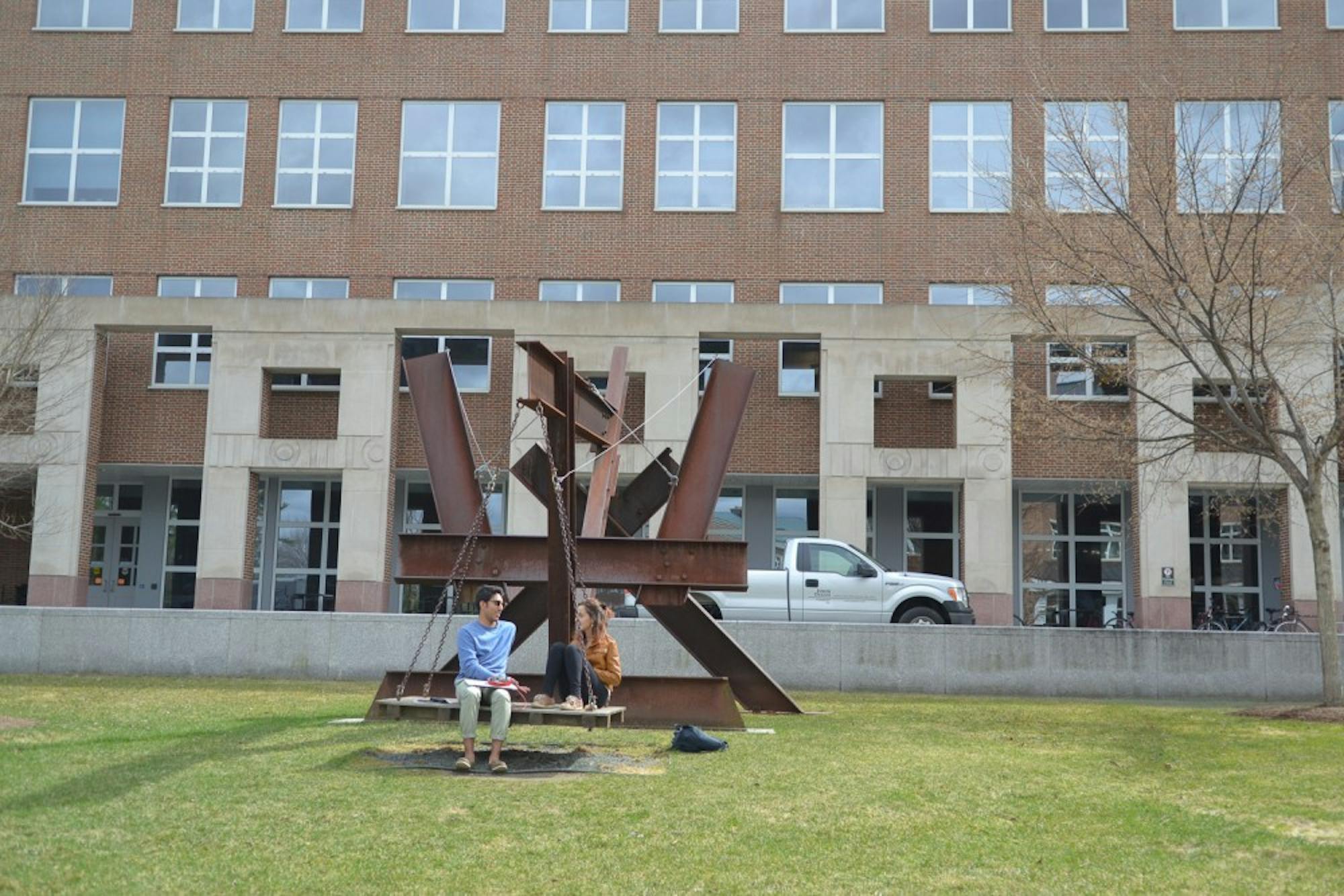Beyond trying to grab the swinging platform of “X-Delta” as a study space on the nicer days and complaining about the strange proportions of the Baker-Berry Library windows, most students do not spend a lot of time thinking about campus landscaping, an aspect of the College that has a daily impact on their lives.
Director of campus design and construction John Scherding said that the College’s planning division is mostly tasked with optimizing the use of various spaces on campus. The campus planning and facilities division is also in charge of maintaining the campus’s physical environment for the long term.
“A large part of work has to do with monitoring usage of space on campus and trying to be as efficient as we can because, needless to say, new buildings are very expensive and you don’t want to build them if you don’t need them,” Scherding said.
Cornell University planner Leslie Schill said that a major component of campus planning involves highlighting and understanding its aesthetic strengths during the preparation and landscaping process.
“It’s really pulling together systems and structures,” Schill said. “You have to look at the balance of natural beauty and man-made structures. You have to see how systems connect.”
In addition to structuring new buildings and grounds to complement and balance the existing spaces, campus planning takes into account how inclement weather can impact appearance and safety.
“[Snow] is a real factor, and we certainly have buildings on campus that were designed and built without sufficient knowledge of snow,” Scherding said. “The Hood Museum is a good example. Every winter there is scaffolding set up in many locations around the Hood Museum to protect pedestrians from snow sliding off of the roof.”
Snow does not just cause a visual and safety issue for campus planning — Scherding said that campus landscaping at the College is also concerned with the difficulty and cost of moving snow as well as simply clearing it off of walkways.
“Loading docks and snow removal are two topics that we seem to spend a lot of time talking about in the design phase of projects because they’re really important concerns,” he said.
Ben Geithner ’16, last year’s snow sculpture chair, said that he appreciates the effort that goes into maintaining clean and visually pleasing pathways during the winter.
“As soon as snow is falling, they’ll have those tiny little plows out making the sidewalks clear,” he said.
In addition to the maintenance building, walkways and lawns, campus landscaping also includes handling the College’s public art collection.
Dartmouth currently has over 20 works of public art placed around campus. The collection includes the piece “X-Delta” by Mark di Suvero, which is behind Baker-Berry Library, “Dartmouth Panels” by Ellsworth Kelly on the Hood Museum of Art and “D2D” by Charles Perry, which is located in front of Fairchild Hall.
The public art committee, which is chaired by the Hood Museum and also includes faculty members and representative from the Provost’s Office and the Hopkins Center, chooses public art for campus, Scherding said.
Scherding said that he and the campus planning office work with the public art committee to coordinate the location of new public works.
“My role is helping to coordinate with some of the different facilities organizations on campus just be sure art is placed in areas that are appropriate,” he said.
Art is just one way for the campus planning to improve the aesthetic appeal of a space. The goal of campus spaces, however, is not purely based on the beauty of its art.
“You want the public realm to be activated,” Schill said. “It needs to be welcoming and speak to people in order to create gathering areas, as well as focused spots.”
She also said that central and open spaces are key to maintaining a campus’ aesthetic while serving other key functions.
“They have a huge social function and an environmental function,” Schill said. “They are doing things while looking beautiful. They allow us to commune with nature and help with mental health. They’re timeless and looking at them can take us back to our past. They are beautiful and social, which makes them a place where people can cross over.”
Geithner also said that he believes that nature is integral to the aesthetic appeal of campus.
“It’s nice to have a mix of open space and trees,” he said. “If the Green were just a flat plane of grass, it wouldn’t be nearly as nice as it with the trees.”
Campus landscaping and maintenance is supported by a variety of college departments including facilities operations and management, which also runs custodial, parking and Hinman mail services, and the office of planning, design and construction, Scherding said.
“There are a lot of people responsible for maintain and caring for the facilities, and there is a tremendous amount of pride in the campus among those workers, and I think it’s part of what make Dartmouth a special place to work,” Scherding said.




